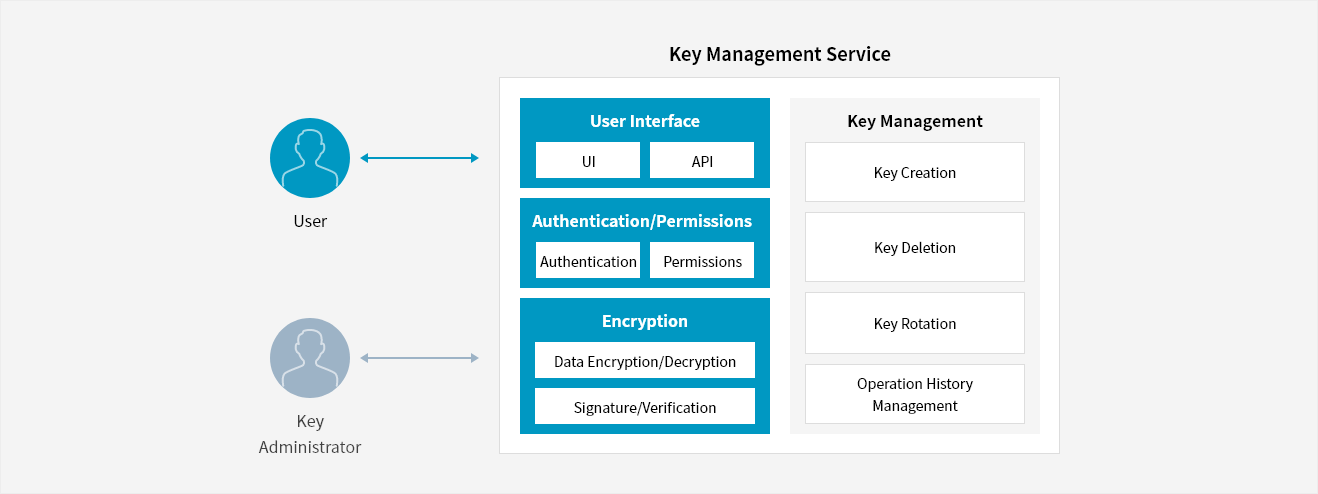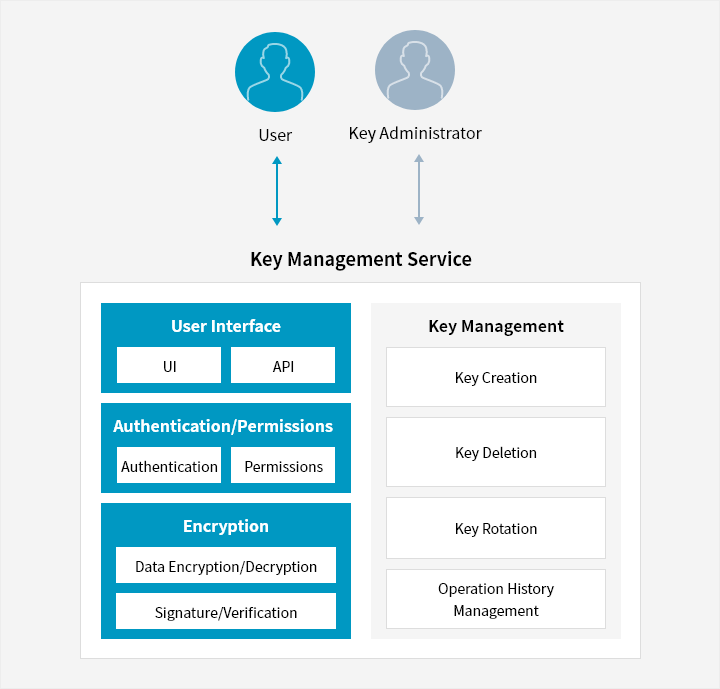
Key Management Service
Easily Creates and Securely Protects Encryption Keys
Overview


-
Hierarchical Key Management
KMS uses hierarchical encryption for data key, master key and root key, thereby ensuring secure key management. The master key is created through the root key stored in the FIPS 140-2 Level 3 certified Hardware Security Module(HSM) and distributed and stored in the KMS for secure protection. Using the mater key, users create a data key for data encryption.
-
Key Lifecycle Management
Key rotation enables the creation of new encrypted data for a given master key and allows users to define the frequency of key rotation based on user policy. In addition, managing usage logs become easy with KMS monitoring. By administrating the lifecycle of encryption keys, one can also delete or reactivate disabled keys to protect data against cryptographic threats.
-
High Availability Infrastructure
Using a high availability infrastructure, KMS delivers a reliable service. KMS provides high availability with multiplexing configurations such as the KMS engine that creates master key and the HSM that stores root key.
-
Key Compatibility
KMS is KMIP*-compliant and it creates and stores encryption key that can be used in other KMIP-compliant applications.
* Key Management Interoperability Protocol : A comprehensive protocol for standard key management, governed by OASIS whose goal is to maintain operability between different encryption services and unifies key management operations.
Service Architecture


- User ↔ Key Management Service
- Key Administrator ↔ Key Management Service
-
-
- Key Management Service
-
- User Interface (UI, API)
- Authentication/Permissions (Authentication, Permissions)
- Encryption (Data Encryption/Decryption, Signature/Verification)
- Key Management (key Creation, key Deletion, key Rotation, Operation History Management)
-
Key Features
-
Key types
- Encryption/Decryption(AES256) : Use the AES256 key(symmetric key) for data encryption operation of up to 32KB
- Encryption/Decryption or Signature/Verification(RSA-2048) : Use the RSA key(asymmetric key, 2048 bit) for data encryption of up to 190B or 8KB signature
- Creation/Verification(HMAC) : Use to create and verify hash-based message authentication code(HMAC)
- Signature/Verification(ECDSA) : Use the ECDSA key(asymmetric key) for data signature of up to 8KB
※ Korea's Public Authentication Encryption Algorithm, ARIA can be used for SCP Sovereign
-
Managing key permissions
- Select an account that will be granted access to the master key (An account within the same project)
- Assignment of key roles : Key manager, Encryptor/Decryptor, Encryptor, Decryptor, Key reviewer
-
Managing key lifecycle
- Key rotation : Create a new key version. Define automatic key rotation, anywhere from 1 day to 730 days
- Key deletion : Upon request, a key will immediately be disabled and be permanently deleted after 72 hours
- View operational logs : Date of operation, operation details and results, account used for operation
Pricing
-
- Billing
- Number of owned key + Number of key requests
Whether you’re looking for a specific business solution or just need some questions answered, we’re here to help